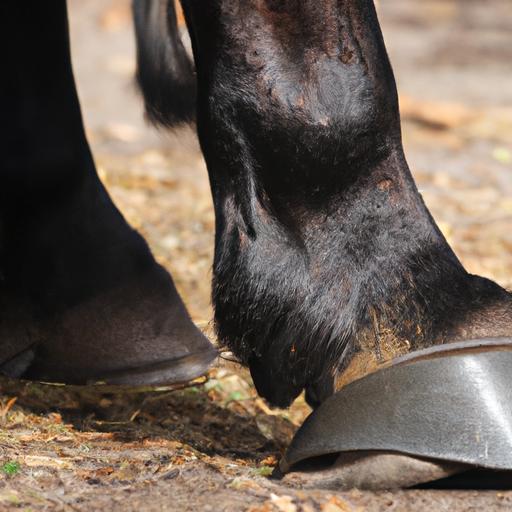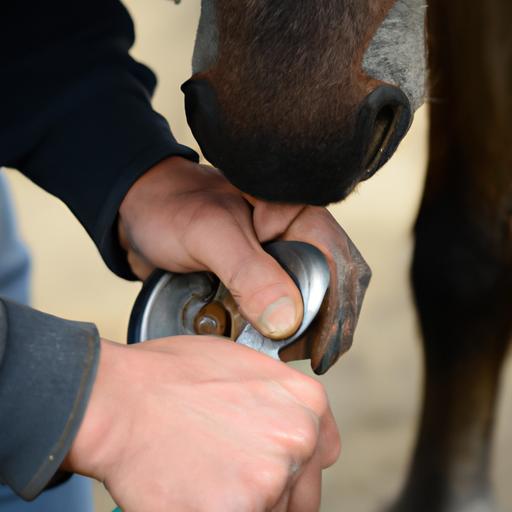Discover the essential practices for optimal hoof care in horses. Learn about cleaning, trimming techniques, and the use of protective aids for hoof care in horses.
Horses are majestic creatures, known for their grace and strength. As an equestrian enthusiast, have you ever wondered about the crucial role that hoof care plays in a horse’s overall well-being and performance? Well, look no further! In this article, we will delve into the significance of proper hoof care and explore how it directly impacts your equine companion’s health and abilities.
A. Importance of Hoof Care in Horses
When it comes to horse care, maintaining healthy hooves is of utmost importance. The hooves serve as the foundation for a horse’s entire body, bearing the weight and providing stability during various activities. Neglecting hoof care can lead to a myriad of issues, such as lameness, discomfort, and even long-term damage.
B. Role of Hooves in Horse’s Overall Health and Performance
Imagine building a house without a solid foundation – it would crumble under pressure. Similarly, a horse’s hooves are the foundation for its entire skeletal system. Well-maintained hooves ensure proper alignment of bones, joints, tendons, and ligaments, reducing the risk of injuries and enhancing overall performance.
Moreover, hooves play a crucial role in shock absorption, protecting the horse’s joints from the impact of movement. Healthy hooves enable horses to navigate various terrains with ease, whether it’s galloping through open fields or tackling challenging trails.
C. Brief Overview of the Article’s Main Points
Throughout this article, we will explore the intricate anatomy of horse hooves, common hoof problems that can arise, preventive measures to ensure optimal hoof health, and best practices for effective hoof care. By the end, you will have a comprehensive understanding of how to keep your horse’s hooves in top shape, allowing them to thrive and reach their full potential.
So, let’s embark on this hoof care journey together and unlock the secrets to maintaining healthy and resilient hooves for your equine companion. Are you ready to take the reins? Let’s get started!
Understanding Hoof Anatomy

To truly comprehend the importance of hoof care, it is essential to have a solid understanding of the intricate anatomy that makes up a horse’s hoof. By delving into the structure and function of the hoof, as well as the different parts and their roles, we can gain valuable insights into how to effectively care for this vital component of a horse’s overall health.
A. Structure and Function of Horse’s Hoof
The horse’s hoof is a remarkable structure, consisting of several layers that work together to provide support, protection, and mobility. The outer layer, known as the hoof wall, acts as a shield, safeguarding the sensitive internal structures. Beneath the wall lies the laminae, which provide attachment and stability between the hoof wall and the underlying structures.
Within the hoof, we find the coffin bone, also known as the third phalanx or pedal bone. This bone, suspended within the hoof capsule, plays a crucial role in weight-bearing and shock absorption. Surrounding the coffin bone, we have the digital cushion, a specialized structure that aids in cushioning and dissipating forces during movement.
B. Different Parts of the Hoof and Their Roles
Within the hoof structure, various parts serve distinct roles in maintaining proper function and health. Let’s explore some of the key components:
1. Hoof Wall:
The hoof wall is the hard, outer layer that protects the internal structures of the hoof. It provides structural integrity and acts as a barrier against external elements.
2. Frog:
Located at the back of the hoof, the frog is a triangular-shaped structure that aids in shock absorption and traction. It also helps to circulate blood when the hoof makes contact with the ground.
3. Sole:
The sole is the concave area on the underside of the hoof. It acts as another protective layer and helps distribute weight evenly across the hoof.
4. Bars:
The bars are extensions of the hoof wall that curve inward from the heel towards the frog. They provide additional support and stability to the hoof.
By understanding the structure and function of the hoof, as well as the different parts and their roles, we can better comprehend the significance of maintaining proper hoof care. In the next section, we will explore some common hoof problems that horses may encounter and how to address them effectively.
Preventive Measures for Optimal Hoof Health
As the saying goes, “prevention is better than cure,” and this holds true when it comes to maintaining the health of your horse’s hooves. By implementing preventive measures, you can ensure that your equine companion’s hooves remain strong, resilient, and free from common ailments. Let’s explore some key practices that contribute to optimal hoof health.
A. Regular Farrier Visits and Trimming
One of the fundamental steps in hoof care is regular visits from a skilled farrier. These professionals specialize in trimming and maintaining hooves to promote proper balance and alignment. During these visits, the farrier will assess the condition of the hooves, identify any issues, and trim them to the appropriate length.
Regular trimming helps prevent overgrowth, uneven wear, and imbalances that can lead to discomfort and lameness. It also allows for proper weight distribution, reducing strain on specific areas of the hoof and minimizing the risk of injuries.
B. Proper Nutrition and Diet for Strong Hooves
Just like humans, horses require a balanced diet to maintain overall health, and this includes their hooves. Providing your horse with a nutritious and well-balanced diet is crucial for the development and strength of their hooves.
Ensure that their diet includes essential nutrients such as biotin, zinc, copper, and amino acids, which contribute to hoof strength and growth. Consult with a veterinarian or equine nutritionist to determine the appropriate diet for your horse’s specific needs.
C. Regular Exercise and Movement for Hoof Stimulation
Hooves thrive on movement! Regular exercise and ample turnout time allow horses to engage in natural activities that stimulate blood circulation in the hooves. Movement helps distribute nutrients and oxygen to the hooves, promoting their overall health and growth.
Encourage your horse to engage in various activities like walking, trotting, cantering, and even light jumping. This not only benefits their physical fitness but also contributes to the well-being of their hooves.
By implementing these preventive measures, you can ensure that your horse’s hooves remain in optimal condition, reducing the likelihood of common hoof problems. Remember, a proactive approach to hoof care is key to your equine companion’s long-term health and performance.
Conclusion
In conclusion, prioritizing hoof care in horses is an essential aspect of responsible horse ownership. By understanding the importance of maintaining healthy hooves, you can ensure the overall health, well-being, and performance of your equine companion.
Throughout this article, we explored the significance of hoof care and its direct impact on a horse’s overall health and abilities. We discussed the role of hooves as the foundation for the horse’s entire body, bearing weight, providing stability, and facilitating movement. Neglecting hoof care can lead to lameness, discomfort, and long-term damage, hindering your horse’s potential.
To ensure optimal hoof health, it is crucial to follow preventive measures such as regular farrier visits and proper nutrition. Additionally, implementing best practices for hoof care, including cleaning and maintaining hooves, correct trimming techniques, and utilizing hoof protection and supportive aids, will significantly contribute to your horse’s well-being.
As horse enthusiasts, we owe it to our equine partners to provide them with the best possible care. By prioritizing hoof care, we can promote their comfort, prevent injuries, and enhance their performance. Remember, healthy hooves are the key to a happy and thriving horse.
For more information and resources on horse care, hoof health, and equestrian topics, visit Horsemasterypro.com. We are dedicated to providing valuable insights and guidance to help you become a knowledgeable and skilled horse owner.
So, let’s embark on this hoof care journey together, ensuring our horses have the strong and healthy hooves they deserve. Let’s make every stride count!


